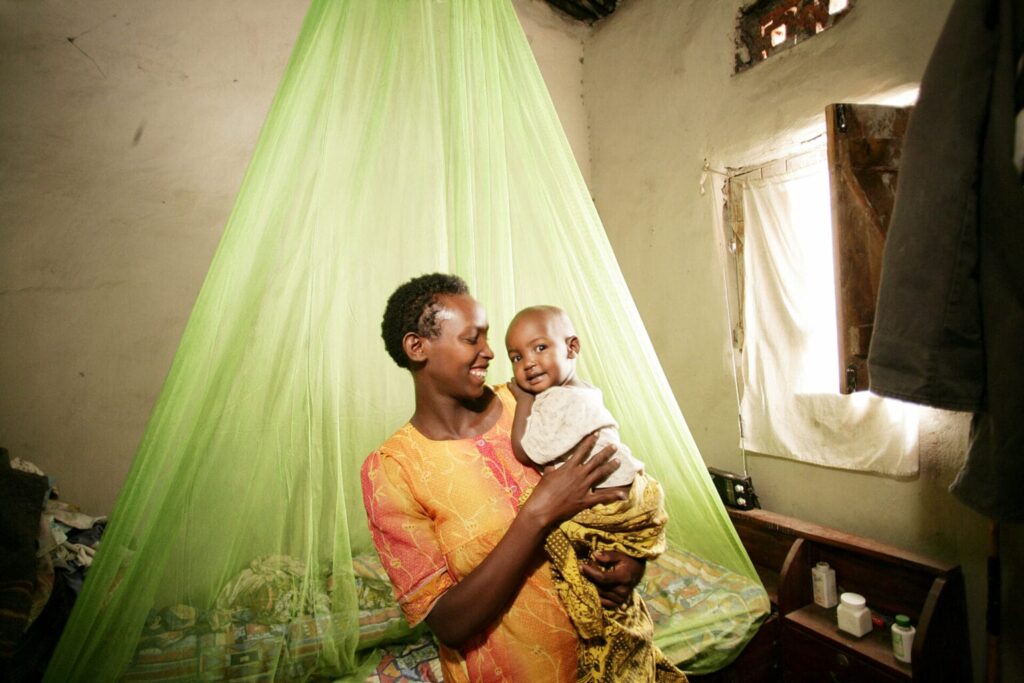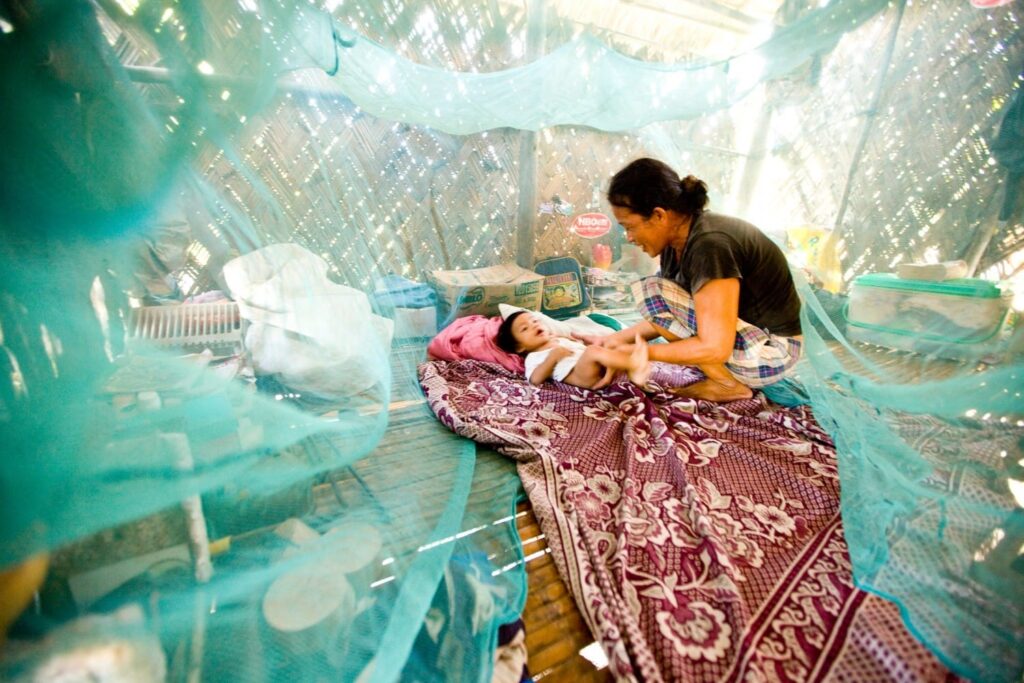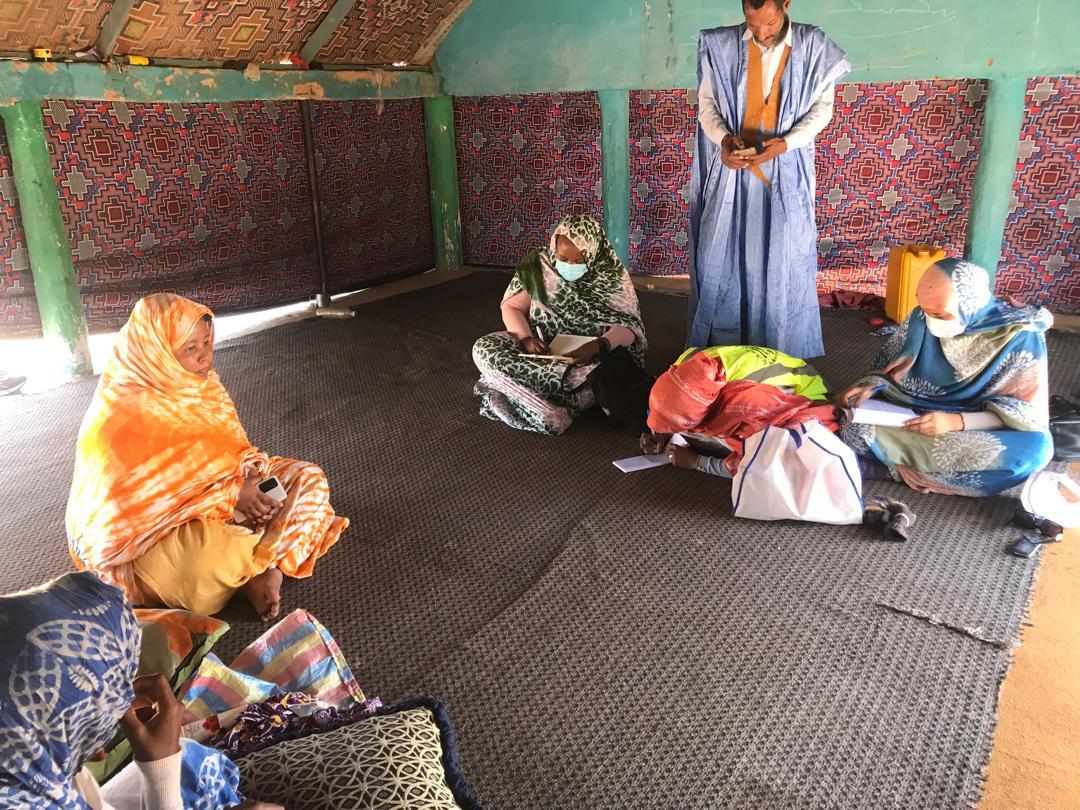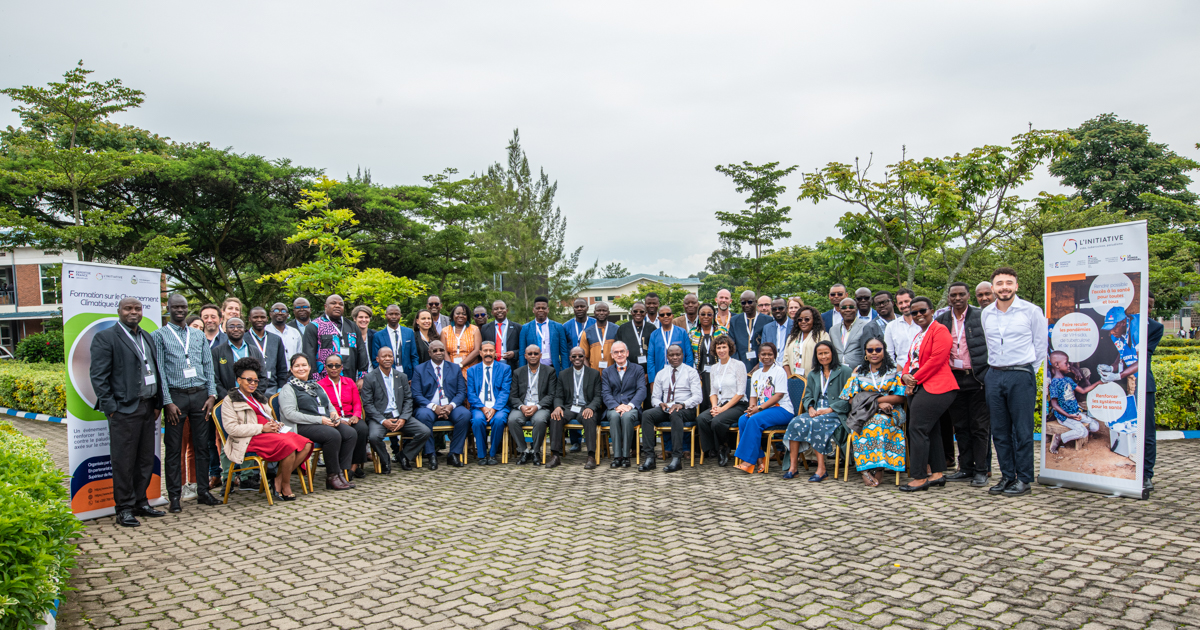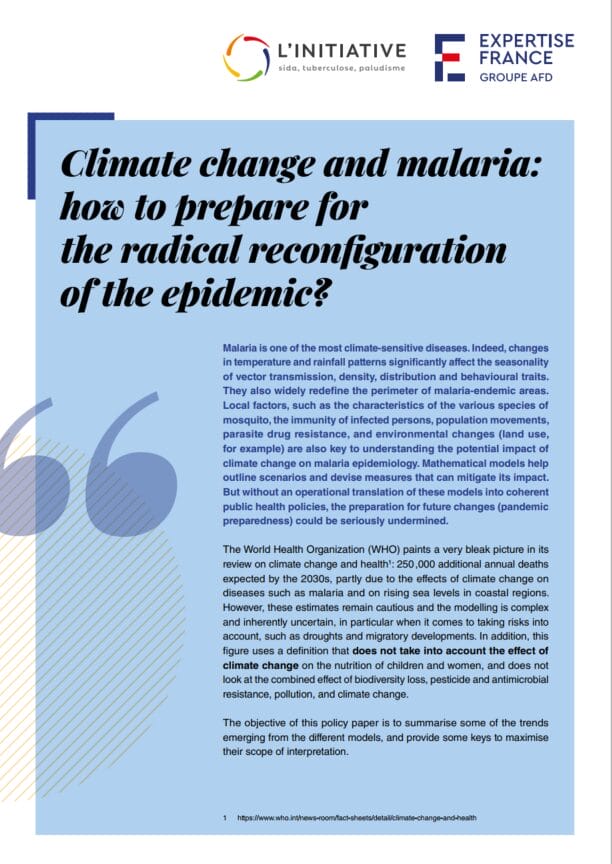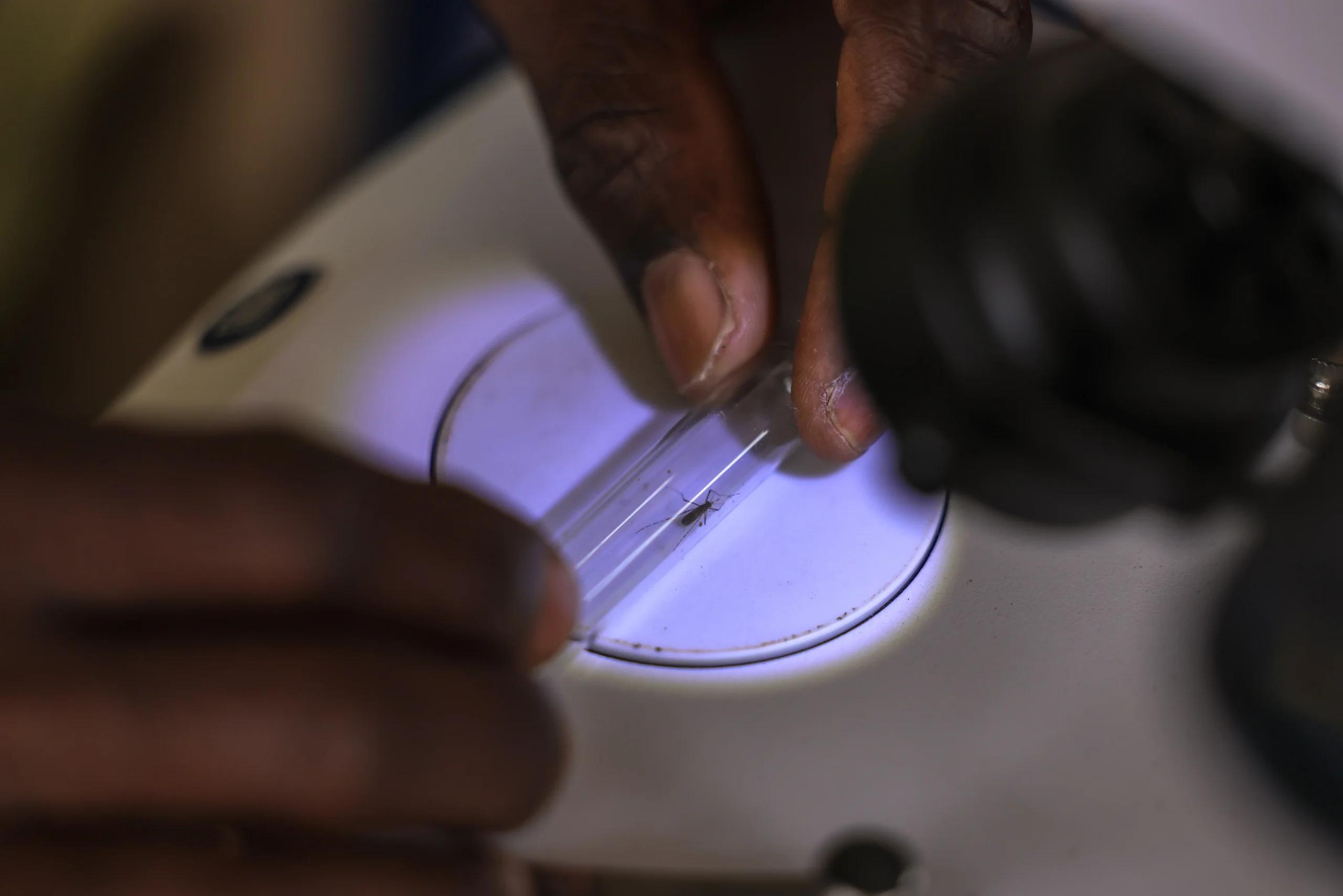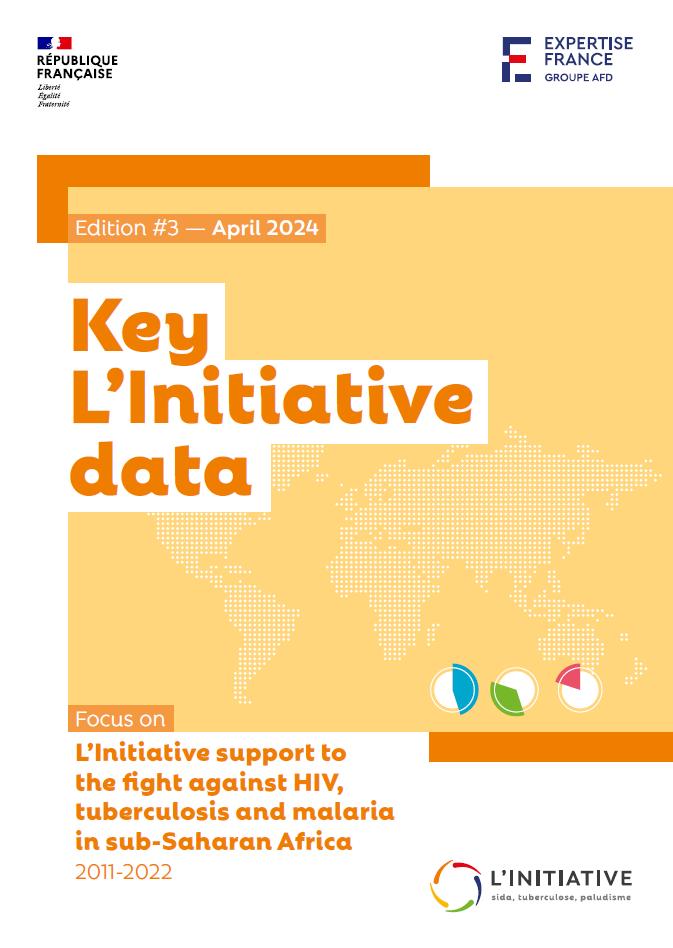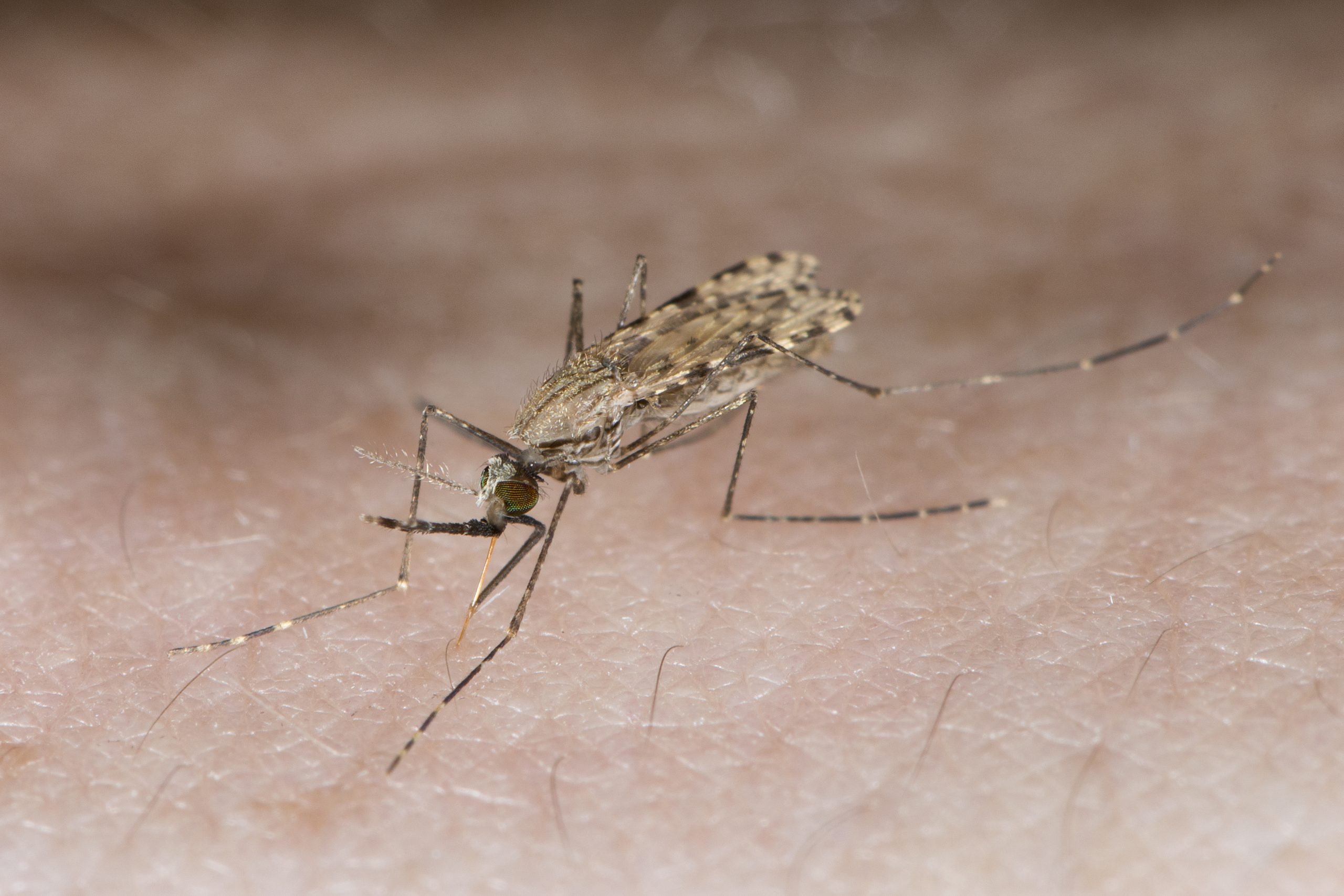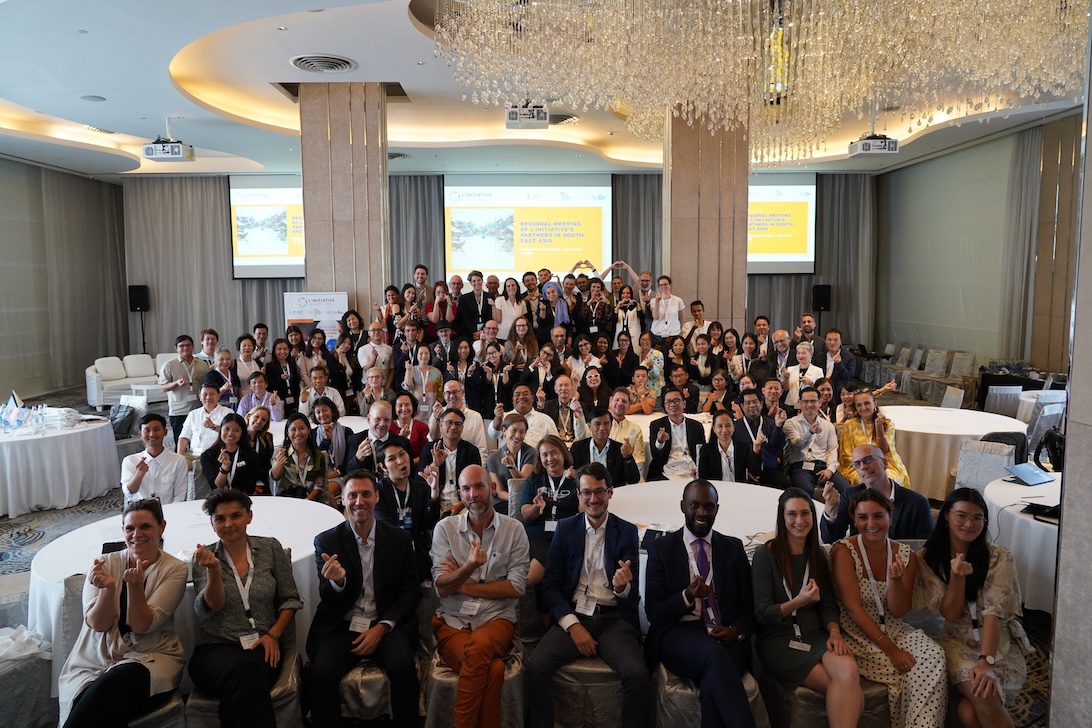The World Health Organization estimates that half the world’s population is exposed to a risk of malaria. In 2023, the disease—caused by a parasite transmitted by certain mosquitoes—claimed almost 600,000 lives.
Although eradicating this pandemic remains the shared ambition of global health organizations, progress is currently hindered by several phenomena. These include a lack of growth in investment, the growing resistance to insecticides and antimalarial drugs, the reduced efficacy of rapid diagnostic tests (RDTs) due to the rise in mutations of the parasite, the arrival of new mosquito species, and climate change. Despite a significant reduction in global malaria morbidity over the last two decades, the malaria pandemic remains very active, particularly in Africa.
We are fighting malaria on all fronts
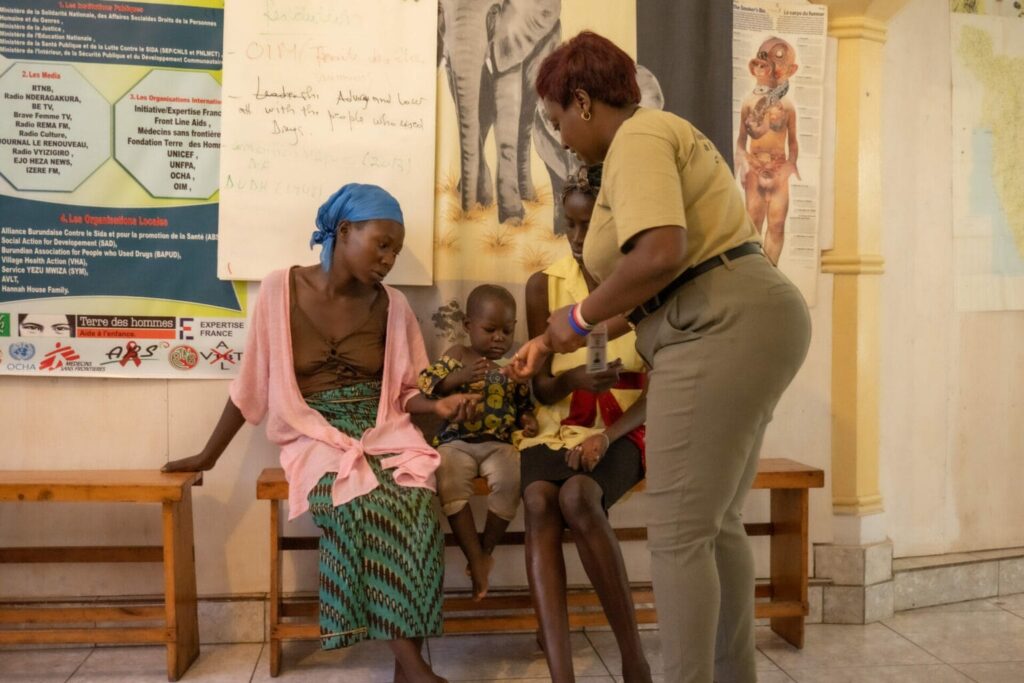
Malaria poses significant challenges to the global community. L’Initiative helps respond to these challenges by providing technical and financial support to increase the impact of programs funded by the Global Fund. We are fighting malaria on all fronts: monitoring (supporting national laboratories to monitor therapeutic efficacy), prevention (promoting the use of repellent equipment, broadening access to diagnostic testing, access to chemoprevention), treatment (improving access to antimalarial drugs), operational research (funding innovative strategic and technical projects), and access to healthcare for vulnerable people (targeted support for pregnant women and children under the age of five).
L’Initiative plays a role in collective action to achieve the Global Technical Strategy for Malaria goals: to reduce the incidence of malaria and malaria-related deaths by at least 90% by 2030 compared with 2015.
Our comprehensive approach includes health and the environment
Climate change acts as a catalyst for epidemics, which obliges us to change our approach to combating malaria. An increase in average temperatures could lengthen the periods conducive to transmission of the disease by changing the behavior of mosquitoes and the areas they inhabit (see study published in The Lancet in 2022).
The climate crisis is one of many of the factors driving malaria, which we now take into account in our work and when allocating our investments.
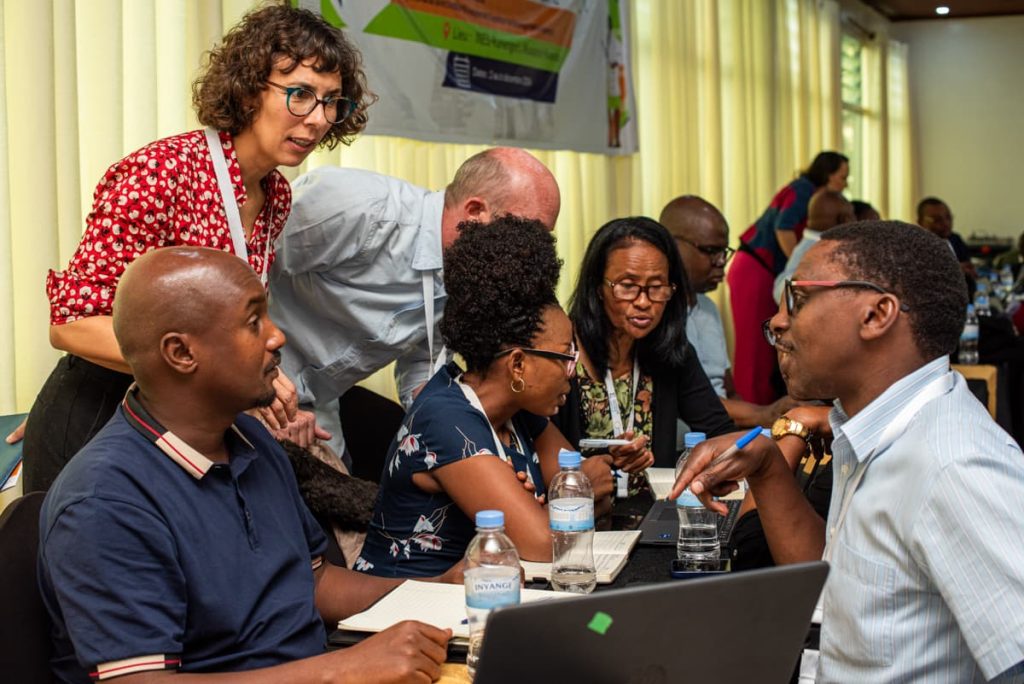
Adopting the One Health approach
Applied to the fight against malaria, the concept of One Health involves taking into account the complex interactions between humans, animals, disease-carrying mosquitoes and their parasites, as well as the ecosystem in which we co-evolve. To provide an operational response to the challenge of climate change, L’Initiative organized a training session in Rwanda for the National Malaria Control Programs of 19 African countries. The week-long event was led by expert trainers in their respective fields and also gave countries the opportunity to share their experiences. It was a way to foster collaboration and shape future perspectives across borders.
We are increasing our support for research
L’Initiative supports operational research programs and innovation in malaria prevention, diagnosis, and treatment. This investment is crucial, particularly in addressing the growing challenge of parasite drug resistance and the emergence of insecticide resistance in mosquitoes. It also aims to support innovative approaches to disease prevention and anticipate the impacts of climate change on the spread and evolution of malaria.
That is why, every year since 2018, we have launched calls for proposals dedicated to operational research, with the 2025 edition specifically focusing on resistance to antimalarial drugs.

Strengthening malaria prevention in children under five
After just over a decade of implementation, seasonal malaria chemoprevention (SMC) has made a significant contribution to reducing the prevalence of the disease among infants and young children, who are the primary victims of the pandemic. The WHO recommends this strategy, which involves administering a combination of antimalarial drugs to children aged between 3 and 59 months during the season when the risk of malaria transmission is highest.
While SMC has helped save millions of lives, it is still not widely implemented. Worse yet, it is now under threat due to the withdrawal of funding from the United States, a key contributor to the rollout of this strategy. At L’Initiative, we continue to support research projects aimed at accelerating the deployment and optimizing the use of SMC. One such project, for example, is led by the Research Institute for Health Sciences (IRSS) in Burkina Faso. It seeks to screen and treat the immediate household contacts of children receiving preventive treatment, in order to enhance the strategy’s effectiveness.
The development of a malaria vaccine
Since October 2022, the first malaria vaccines (RTS,S and R21) have been recommended for use in children. This represents a major breakthrough, despite significant implementation challenges, particularly due to the four-dose schedule. The rollout of these new preventive tools brings hope—especially when combined with other strategies. One study notably showed a drastic reduction in malaria cases and mortality when vaccination is paired with seasonal chemoprevention. In this context, L’Initiative is supporting a project led by Epicentre in Chad, aimed at demonstrating the acceptability, feasibility, and cost of vaccine delivery by community health workers responsible for SMC. This progress strengthens our commitment to supporting all measures that help prevent the spread of malaria—vector control, prophylaxis, vaccines—while ensuring access to appropriate care in case of infection.
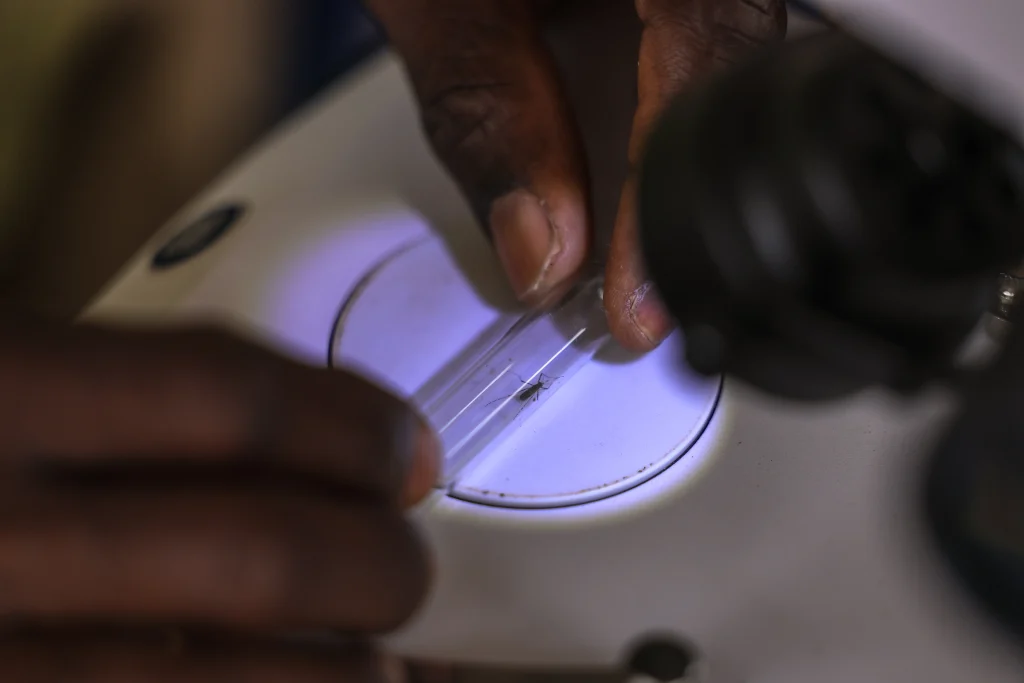

Vector control: a key link in the fight against malaria
Despite the progress made, malaria remains a major public health burden. This challenge is compounded by new threats, such as the growing resistance of mosquitoes to insecticides, which requires a reassessment of existing control strategies. As part of the “Preventing Malaria” project, the Swiss Centre for Scientific Research in Côte d’Ivoire (CSRS) has developed TrapNet, an innovative malaria prevention device created with the support of L’Initiative. The first pilot deployment sites for the project are located in Korhogo and Abidjan, Côte d’Ivoire.
Protecting vulnerable populations, especially in sub-Saharan Africa
The African continent bears the heaviest burden of the malaria pandemic. Nearly all (95%) of the 597,000 malaria-related deaths have been recorded in this region. As a result, L’Initiative directs the majority of its malaria control efforts toward countries on this continent, though Southeast Asia is not overlooked. Since 2013, L’Initiative has consistently supported malaria elimination efforts in that part of the world, which was the first to experience major resistance to artemisinin-based antimalarial treatments.
Children: the Primary victims of malaria
The vast majority of those who die from malaria are children under the age of five (76%). Pregnant women are also highly vulnerable, facing major risks such as severe—and sometimes fatal—anemia, as well as complications for their babies, including intrauterine growth retardation and low birth weight.
This is why we support several targeted programs aimed at these high-risk groups. For example, in Benin, a project promotes a community-based approach to monitoring and preventing malaria among vulnerable populations. In Madagascar, another project focuses on reducing malaria mortality in young children through the community-based distribution of rectal artesunate—a “bridging therapy” that buys time for severe cases to reach health centers for appropriate care. Additionally, in Cameroon, the organization Reach Out is working in civil war-affected areas to improve access to proper care for internally displaced people.
